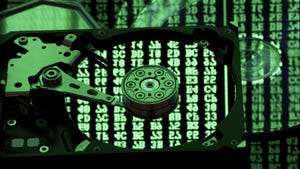
Insight and analysis on the data center space from industry thought leaders.
Internet of Things: What Does it Mean for Data Centers?Internet of Things: What Does it Mean for Data Centers?
In 2014, data centers are only beginning to see change from the Internet of Things, writes Bhavesh Patel of ASCO.
June 16, 2014
Bhavesh Patel is Director of Marketing and Customer Support at ASCO Power Technologies, Florham Park, NJ, a business of Emerson Network Power.
At its most basic, the Internet of Things (IoT) is the widespread usage of any sensing device that has a chip and an IP address and can communicate. Put even more succinctly, it is communication among physical objects.
Sophisticated machine to machine (M2M) applications whereby connected sensors collect data about real-time operating conditions of equipment and use software to analyze the information and set up responses if certain data points coincide or if the data sets off an alarm are on the rise.
While a lot of the growth is in the vertical markets of home automation, medical connected devices, wearable devices, and connected cars, there will also be dramatic growth in data center and other facility management.
An example of the IoT at work in a data center is when portions of HVAC systems are operating in a smart building environment using “big data.” Just as occupancy sensors are used to control lighting circuits in offices, multiple smart thermostats located throughout a data center feed information and control to HVAC circuits.
Today, sensors capture the presence of an individual, however, the information is not analyzed and the benefits of the data are not maximized. Mining the data, rather than just capturing it, can lead to profitable analysis of patterns and trends.
Growth in the Internet of Things
Growth in the IoT is staggering to think about. Approximately 90 percent of total data in today’s world did not exist two years ago so it is not surprising that much of it is not being optimized.
What’s more, the number of Internet connected devices surpassed the world’s population 3 years ago. By 2020, there will be 5 to 10 times the number of devices sold with native Internet connectivity as will be Internet connected PCs or smartphones. Multiple sources that analyze the IoT believe that by 2020 there will more than 25 billion Internet connected devices.
The beginning and beyond
The IoT starts with sensors. In data center management, the IoT relates to systems that sense, transfer and act on information wirelessly, that adapt to and anticipate facility needs and drive decisions about operation, efficiency, capability, etc. and that will proactively manage the environment.
As the IoT evolves, data centers will migrate to clusters of management systems. Each cluster will feature detailed monitoring, measurement and control capability within itself and feed overview and status information to others via a Building Management System (BMS) for decision-making using aggregated data.
However, better use of big data requires dynamic visualization which can lead to predictability of a facility’s future data. Components required to effectively visualize and use data in data centers include sensors, microcontrollers, actuators, communication chips, platform and application software, and wireless or wired communications.
As identified by Gartner, potential challenges to deal with the velocity, volume, and structure of the IoT data include security, consumer privacy, storage management including types of generated data to be stored and accessed and used cost-effectively, increased investment in server technologies, and increasing inbound data center bandwidth requirements in order to process all the data.
Gartner also mentions that the IoT will likely force facilities to collect data in multiple mini-data centers where the initial processing can occur before being forwarded to a central site. All this influx of data will require enhanced and optimized data management at data centers, not only of the data but also of the primary and backup power for the facility.
Newly evolving sophisticated technologies for gathering, monitoring, analyzing and acting on data from building systems will gain traction in data centers. For example, a proactive Data Center Infrastructure Management (DCIM) system which gathers information from many types of sensors and associated components can provide a holistic view of data center performance, enabling a broad range of informed decisions in multiple areas, from IP performance to asset management.
Data centers will also take advantage of a more specialized Critical Power Management System (CPMS) that is designed to help ensure continued operations and would help with what-if analysis or in preventing power problems. These systems are not exclusionary but rather would work well in concert with other facility management systems.
What this all means
What does “Internet of Things” mean in data center management? It could mean a system that senses, transfers, and acts on information wirelessly. It could refer to a system that adapts to and anticipates facility management needs. It could be a system that proactively manages your environment.
In 2014, data centers are only at the beginning of the change phase to the IoT. Whereas today, monitoring power and backup power still calls for someone physically walking up to that monitoring equipment, once everything becomes digital, the monitoring of the information as well as the control of the power will be achieved through digital technology over the Internet.
There are elements of that futuristic concept being used today in data centers but they are not integrated, rather, they are used independently. Down the line, when collected data at data centers are connected to the Internet, analyzed and used intelligently, all that data will be used to predict the future and facilitate better business decisions. This is an evolution that will happen at data centers, changing the structure of data center management.
Industry Perspectives is a content channel at Data Center Knowledge highlighting thought leadership in the data center arena. See our guidelines and submission process for information on participating. View previously published Industry Perspectives in our Knowledge Library.
About the Author
You May Also Like









